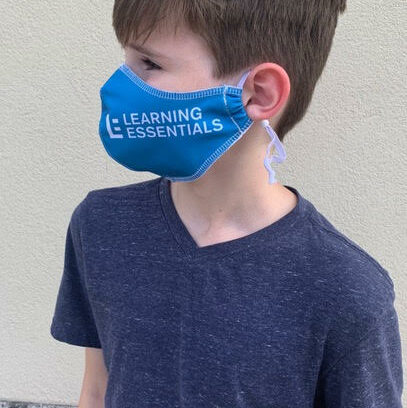
 The sudden switch to virtual learning last spring threw us all for a loop. Students were perplexed, parents were stressed, teachers were overwhelmed, and schools were ill-prepared to roll out an entirely new structure for online learning. However, as time passed, we’ve become somewhat more accustomed to our new normal. Virtual learning is not as personal, effective, or sustainable as the beloved in-person classroom instruction that we didn’t know we’d miss until it was gone.
The sudden switch to virtual learning last spring threw us all for a loop. Students were perplexed, parents were stressed, teachers were overwhelmed, and schools were ill-prepared to roll out an entirely new structure for online learning. However, as time passed, we’ve become somewhat more accustomed to our new normal. Virtual learning is not as personal, effective, or sustainable as the beloved in-person classroom instruction that we didn’t know we’d miss until it was gone.
With the commencement of quarter one, it has become even more apparent that virtual learning is not only leaving much to be desired, but it’s also leaving much more to be learned. Recently reported data suggests that, across the board, students are not thriving. Worse, the achievement gap is widening, meaning that students who were statistically already hindered by certain disparities are feeling the negative effects of virtual learning even more. Math scores have dropped. Literacy scores have dropped. Enrollment is down, as is the rate of students currently passing their classes.
However, behind every data point is a story—a story that emphasizes the human component, for which standardized tests can simply not account. For instance, some secondary students are working part-time jobs to help with bills while a parent or guardian is sick or unemployed, meaning that attendance and participation may be spotty. Some students are experiencing food insecurities due to the fact that families are financially struggling during business and hospitality closures. Some students are experiencing social-emotional stressors and psychological impacts that they may be unfamiliar with or ill-equipped to deal with on their own. The scenarios could go on and on, but the point is this: data is open to interpretation, especially during these unique circumstances.
Here is what we can do:
- Teachers should utilize office hours to check-in with struggling students about more than their missing work. Yes, it is important that their work be submitted. However, it is arguably more important to ask why a certain student is struggling to compete or submit assignments. Are they caring for younger siblings? Working outside of school? Caring for an ill family member? Having issues with technology, wifi, or connectivity? Are they used to in-person accommodations? Teachers know when students are struggling by looking at the grades and quality of work, but a more significant data point indicates reasons for their struggles—this is worth investigating.
- Parents and teachers should utilize school counselors and other support services for struggling students. Data simply points to areas of need, but it doesn’t provide suggested interventions or recommendations for additional support. The counselors can be invaluable when it comes to providing insight into a student’s individual circumstances and needs.
- Teachers should consider creating their own surveys and check-in forms to ask students how they think they’re doing and what they’d like to work on. Yes, Map scores and other standardized tests may indicate standards in which students are underperforming, but student voice surveys are able to tell us a lot more. Ask students about their study habits, their reading interests, learning styles, collaborative preferences, parent involvement, etc. This information can help teachers adjust and modify their instruction and assignments to account for student choice and ability level—all of which help to demonstrate important data regarding student achievement.
- Schools or individual teachers should consider sending out a separate survey for parents or guardians to complete. Ask parents about their child’s study habits, individual strengths and needs, extracurricular activities and/or obligations outside of schoolwork, experience with technology, organizational weaknesses, procrastination habits, scheduling difficulties, etc. All of this information will help to inform educators about each student’s unique circumstances, which is inherently tied to his or her performance data.



Comments are closed.